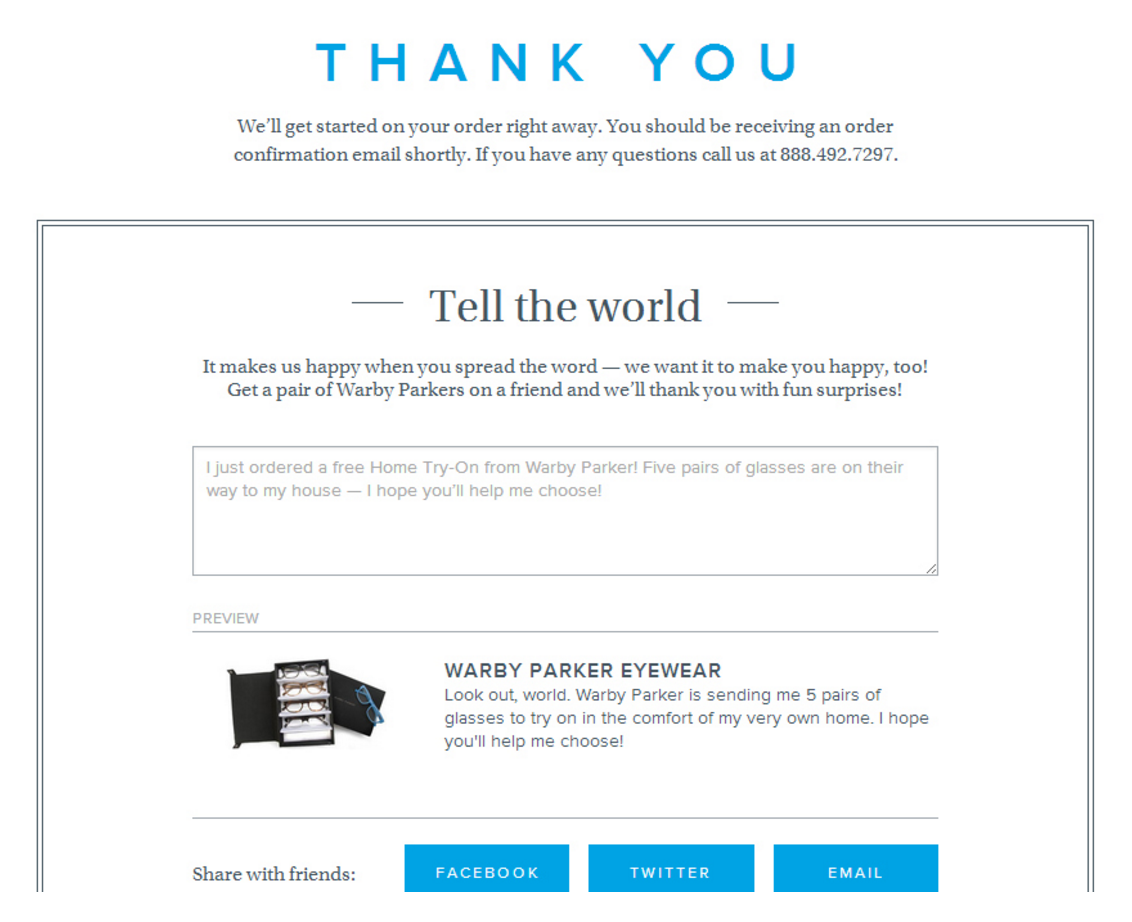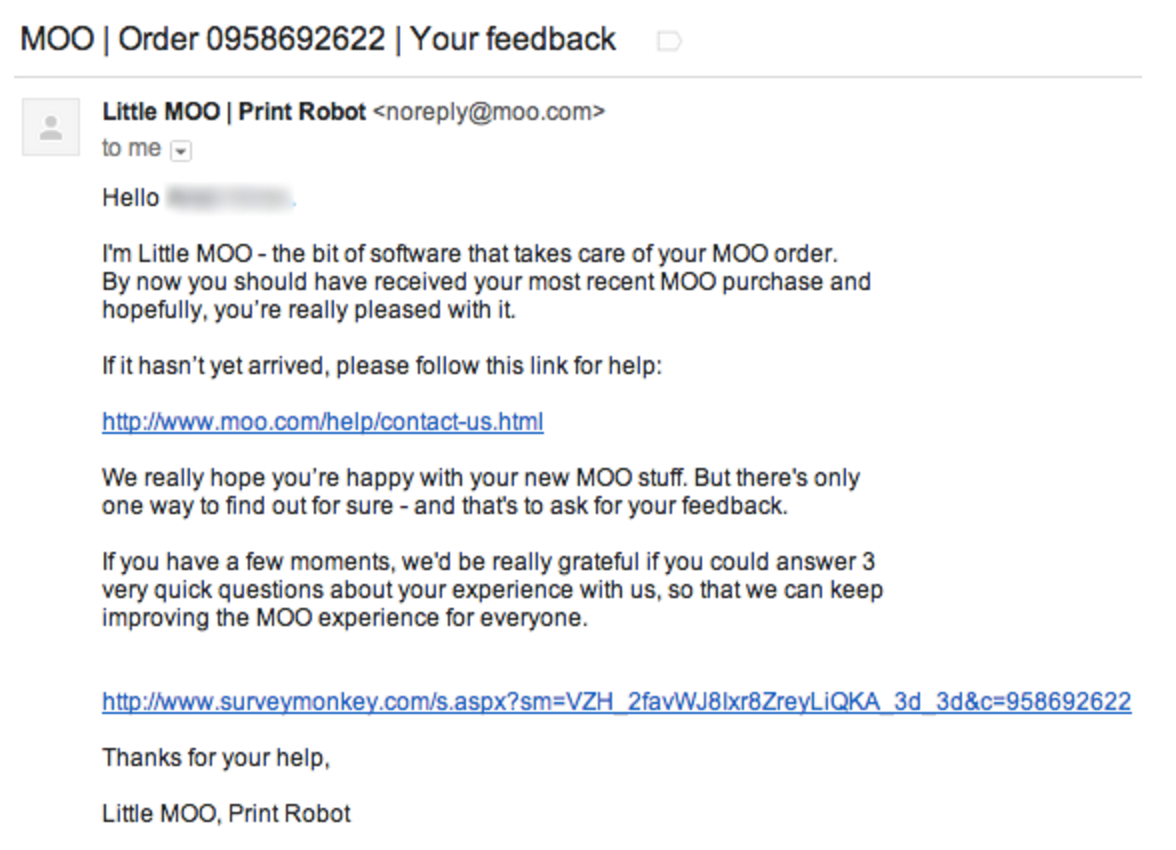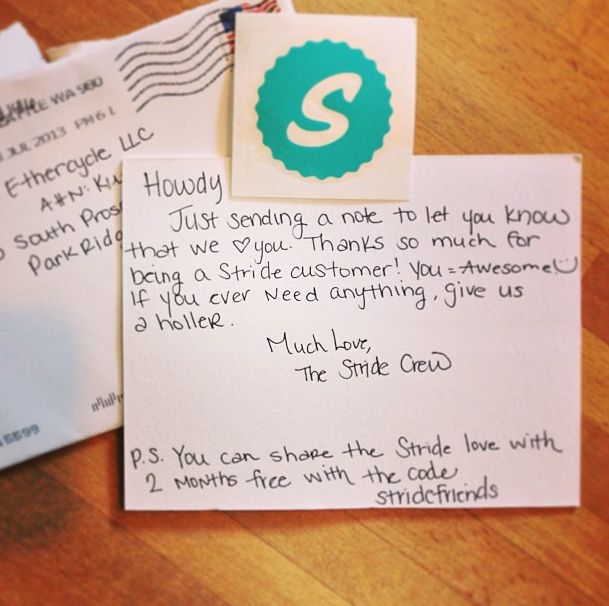Every smart ecommerce business owner knows that in order to succeed in building a profitable business, you must understand that the relationship you establish with customers doesn’t end at purchase. After a customer has bought from you and you’ve successfully fulfilled your promise by delivering their goods in a timely manner, your job is still not done. It’s at this point in the buyer journey that a huge opportunity presents itself: the chance to turn customers into repeat buyers and brand evangelists.
In ecommerce, if you can commit to working intentionally to nurture long-term relationships with customers over time, it can do two things for your business:
- It can increase the average lifetime value of the customers you’re engaging with.
- It can drive those same customers to persuade their friends and family members to try your products or support your business (this is what we refer to as word-of-mouth advertising or word-of-mouth marketing).
The second benefit in the list above is important. Word- of-mouth will always be the most powerful form of marketing because it’s real. A recommendation from a friend will always carry more weight than any paid advertising ever could. It’s how empires are built. If we treat your customers like VIPs, they’ll shout it from the rooftops. And it’s free! The only problem is you can’t fake it. In order for your customers to recommend your business to their friends, they have to truly feel you did right by them. So how do you make it happen?
Here are 3 tactics you can implement at your ecommerce business to increase customer lifetime value and transform customers into brand advocates:
1. The moment they buy, let’s ask them to share it.
If you don’t ask, you don’t get. So you need to ask your customers to talk about you, and you need to make it as easy as possible for them to do it. When someone has just bought a shiny new toy from you, they’re excited. They probably want to tell someone about it. So that’s when to ask.
On your thank you page and in your order confirmation email, give your customers the opportunity to share their purchase on Facebook. You could ask them to share on other networks, but that reduces the chances they’ll share at all, so concentrate on the biggest network: Facebook.
You don’t even need a special app or service to do this, you actually just need a link. Using a free tool like Share Link Generator, you can create Facebook share links that will work anywhere — even inside emails.
2. Say you care by asking for feedback from your buyers.
You can’t expect success with little to no feedback from your customers. Until you’ve asked them, everything you think you know about your customers is a guess, and businesses don’t survive by guessing. One of the best ways to gain insights into how you can evolve your business is having your customers tell you. Ask them to take a quick survey to find where you excel and where you can give them more value. You need to be having deep conversations with your customers. Knowing why they are buying as well as the language they use to describe the benefits of your products is the most critical insight you can get in growing your business with the times. Plus, when you ask for feedback, you’re sending a clear message to your customers: that you care.
Build these surveys into a marketing automation system. For example, you could send the following email to a customer a few days after an order has been placed:
First: a big thank you for buying from us recently. We genuinely value having you as a customer, and that’s why we want to what you think of our service.
We hope you’ve had a great experience with us, but good or bad, I want to know what you think. It only takes a minute to give your feedback. Not only will it help us, it will help you out with improved service in the future.
Here’s the link: {LINK TO SURVEY}
Thanks for being open and honest about your experience so we can learn from it.
Don’t obsess over the results, but instead, check it every few weeks so that you can observe trends and respond to them. Seek out insights such as:
1. Understanding who your core customers (and how to market directly to them)
2. Knowing exactly who your real competition is
3. Discovering which benefits are making people buy
4. Plus learn the exact language your customers use to talk about you
With clear direction from your customers, you’ll be able to pivot your positioning and marketing, and watch as both sales and customer satisfaction increase.
Image Source: Shopify
3. Set expectations, then shatter them.
In business, everyone has heard the maxim “under promise and over deliver,” but how do you do that and what does it mean? Most people misinterpret it as a directive to be a pushover or be overly generous. This isn’t the case at all. Every single time you exceed expectations by just a little bit, you’re giving your customers another reason to feel good about their purchase and talk about your business. The best way to make customers feel special is by delighting them with extraordinary service, added rewards, and other surprise perks. Here are some simple ideas you could try:
- Include a thank you note in your packages. If you can’t take the time to hand write them, have them printed and then sign them.
- Include a printed card explaining clearly how to contact customer service in case of issues, and how to return or exchange items if necessary.
- Include free samples of products with purchases. Consider connecting with vendors and asking if they’ll send you samples at a discounted rate.
- Pad your posted transit times by one day, ensuring your packages always arrive sooner than they expected
- Include a discount on their next purchase.
- Even just personalizing your transactional order emails to make them fun goes a long way.
Much of this depends on what you sell, your margins, etc. Find any simple way to over-deliver on expectations, and you will undoubtedly increase customer satisfaction and loyalty.
Example of a handwritten thank you card Image Source: GrowthHackerKit
To start down this road, ask yourself the following: What’s one small step you could take today towards providing your customers with a better experience and more value?
How else are you driving customers to recommend your products to their friends? Leave a comment below—I’d love to hear your ideas.






6 thoughts on “10x Your Revenue: Increasing Customer Lifetime Value”
The handwritten note is always a great choice! Customers love it and then they share it on social media which gives you some free promo, extra exposure, user-generated content and a happy customer. 🙂
For sure – you guys are still doing that well. I remember when Nicole was the one doing all of those, haha. It was a work of art for sure 🙂
The handwritten note is always a great choice! Customers love it and then they share it on social media which gives you some free promo, extra exposure, user-generated content and a happy customer. 🙂
For sure – you guys are still doing that well. I remember when Nicole was the one doing all of those, haha. It was a work of art for sure 🙂
The handwritten note is always a great choice! Customers love it and then they share it on social media which gives you some free promo, extra exposure, user-generated content and a happy customer. 🙂
For sure – you guys are still doing that well. I remember when Nicole was the one doing all of those, haha. It was a work of art for sure 🙂